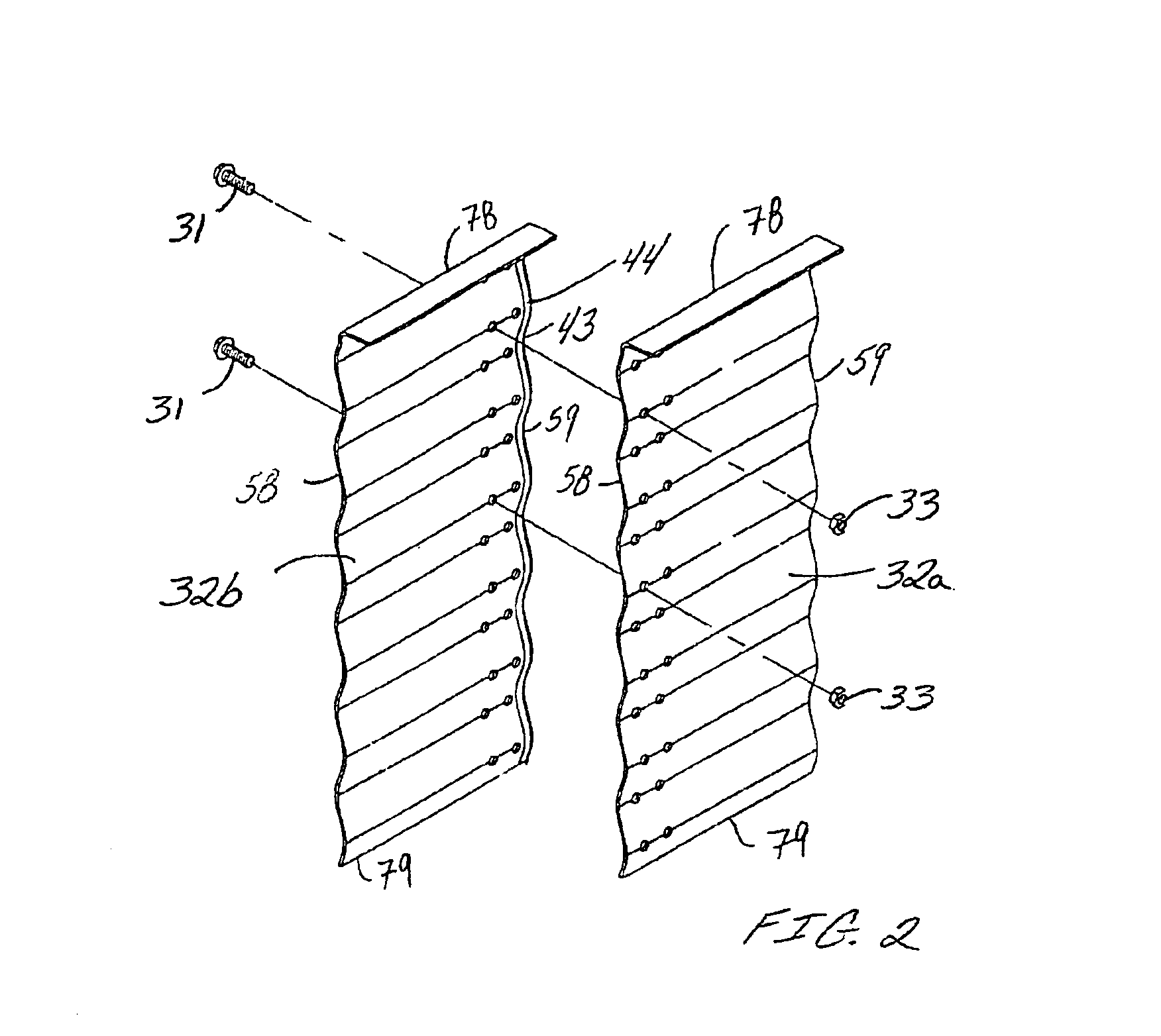Zero ground disturbance system
a ground disturbance and zero-level technology, applied in the field dike apparatus, can solve the problems of entrapped hazardous materials that are often left indelible on the surrounding surface, unable to meet the needs of storage tank spillage, so as to achieve the effect of reducing the risk of leaking
- Summary
- Abstract
- Description
- Claims
- Application Information
AI Technical Summary
Benefits of technology
Problems solved by technology
Method used
Image
Examples
Embodiment Construction
FIG. 1 illustrates a containment system 10 in accordance with the illustrated embodiment of the present invention. The containment system 10 is comprised of a primary storage vessel 12, such as a storage tank, that is configured to hold hazardous materials, and a secondary containment system in the form of a dike apparatus 14. The dike apparatus 14 is comprised of a plurality of brace assemblies 34 set upon the ground 16. The plurality of brace assemblies 34 provide support to a plurality of wall sections 32, at least a portion of the plurality of wall sections 32 preferably being bolted to at least a portion of an adjacent brace assembly 34. The wall sections 32 and attached brace assemblies 34 are arranged to create an enclosed inner chamber 36, as illustrated in FIGS. 1, 8, and 9. The region encapsulated within the inner chamber 36 extends down to at least the enclosed ground 16. The plurality of brace assemblies 34 are also preferably positioned along the plurality of wall secti...
PUM
 Login to View More
Login to View More Abstract
Description
Claims
Application Information
 Login to View More
Login to View More - R&D
- Intellectual Property
- Life Sciences
- Materials
- Tech Scout
- Unparalleled Data Quality
- Higher Quality Content
- 60% Fewer Hallucinations
Browse by: Latest US Patents, China's latest patents, Technical Efficacy Thesaurus, Application Domain, Technology Topic, Popular Technical Reports.
© 2025 PatSnap. All rights reserved.Legal|Privacy policy|Modern Slavery Act Transparency Statement|Sitemap|About US| Contact US: help@patsnap.com



